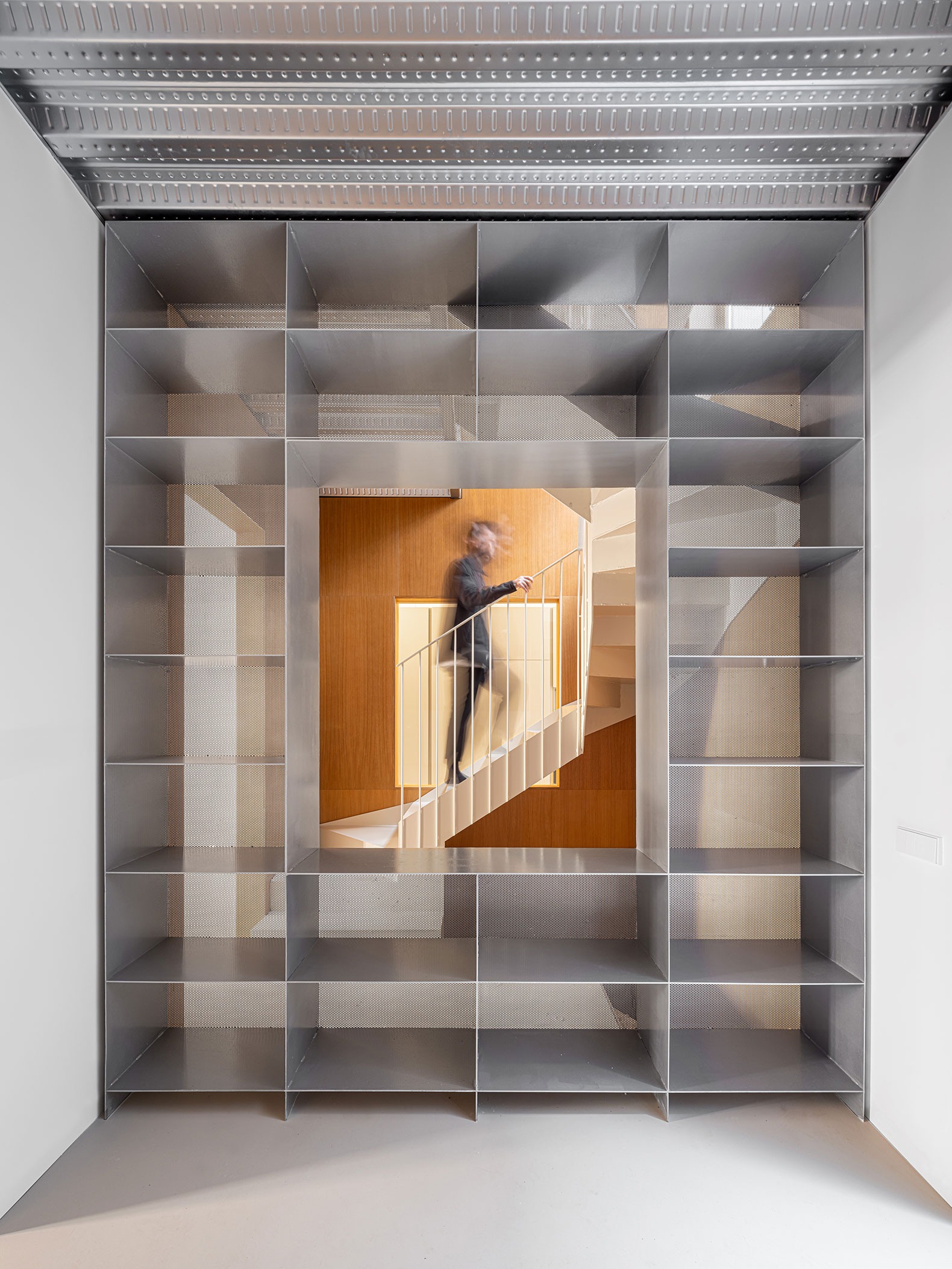
The project developed by SOLAR recovers the original L-shaped shape around the interior courtyard through strategic interventions and demolitions, concentrating the different spaces that make up the housing program around the staircase. The interior spaces establish constant connections with the interior courtyard, thus distributing the program around it.
The exterior façade was renovated following classic restoration models, and contrasts with the treatment of the interior façade, where large openings are opened covered with a recycled aluminum skin, perforated and cut by numerical control. The installation of a façade facilitates its maintenance and restoration if necessary, as well as improving the thermal behavior of the house.

Castelar House by SOLAR. Photograph by Adriá Goula.
Project description by SOLAR
“To restore an edifice means neither to maintain it, nor to repair it, nor to rebuild it; it means to reinstate it in a finished state, which may in fact have never existed at any given time.”
Eugène Viollet-le-Duc.
Building on the Built
Cities and buildings have many lives. For decades a lack of feeling for the remains of the past, the incapacity to see them as depositories of collective memory, has contributed to the destruction of our built heritage. The erosion of our built history has led to a pendular reaction and the sacralization of heritage, the freezing of the object in time, sometimes without the rigor that such a crystallization would deserve.
Casa Castelar is an ideological and aesthetic exercise on how to incorporate the memory and entropy of the already existing – taking advantage of thermodynamic and informational capital – into a contemporary project, from an angle having little to do with dogmatic preservation.

Typological Recovery
Carried out in the 19th century outside the capital, the Madrid Moderno development comprised ninety-six houses designed in accordance with hygienist ideas of the garden-city, of which barely fourteen have survived the real-estate strain that has pressed upon the neighborhood since the 1970s. The commission involved refurbishing one of them, the deficient state of which made it necessary to redo the structure behind the listed facade.
In the knowledge that the site’s heritage value lay beyond neo-Mudejar bonds and the distinctive lookout in front, we opted to recover the building’s original scheme. Thanks to a series of strategic operations and demolitions, which eliminated additions that had crowded the plot, the 1890 layout of an L around a courtyard reappeared, containing the new program. The interior is characterized by the concatenation of regular rooms connected by large voids to the stairwell, generating crossed views as one ascends but without causing any loss of visual references, which remain constant.

Craftmanship vs. Technology
While the front was reconstructed in accordance with classical restoration procedures – where by templates are drawn up, woodwork is done manually, and traditional crafts are harnessed, all at a slow pace – the rear facade was given large openings and a skin of recycled aluminum perforated and cut by numerical control. This lightweight system facilitated construction and ensured easier maintenance, as well as any dismantling and reuse in the future.
With such duality – tradition vs. innovation, craft vs. industry – the house has two contrasting facades. It is a Janus with the countenance of another time, concealing behind it a face of the future.
Ecological Ethics
Because buildings of the past are valuable caches of materials, energy, and human effort, the task of transforming them becomes an ecological imperative bound to re-shape our built landscape. While preserving existing elements, the project has put in bioclimatic strategies and systems – thermal insulation, new joineries, aerothermal solutions, and the optimization of cross ventilation – that have reduced energy consumption by over 70%.




















































